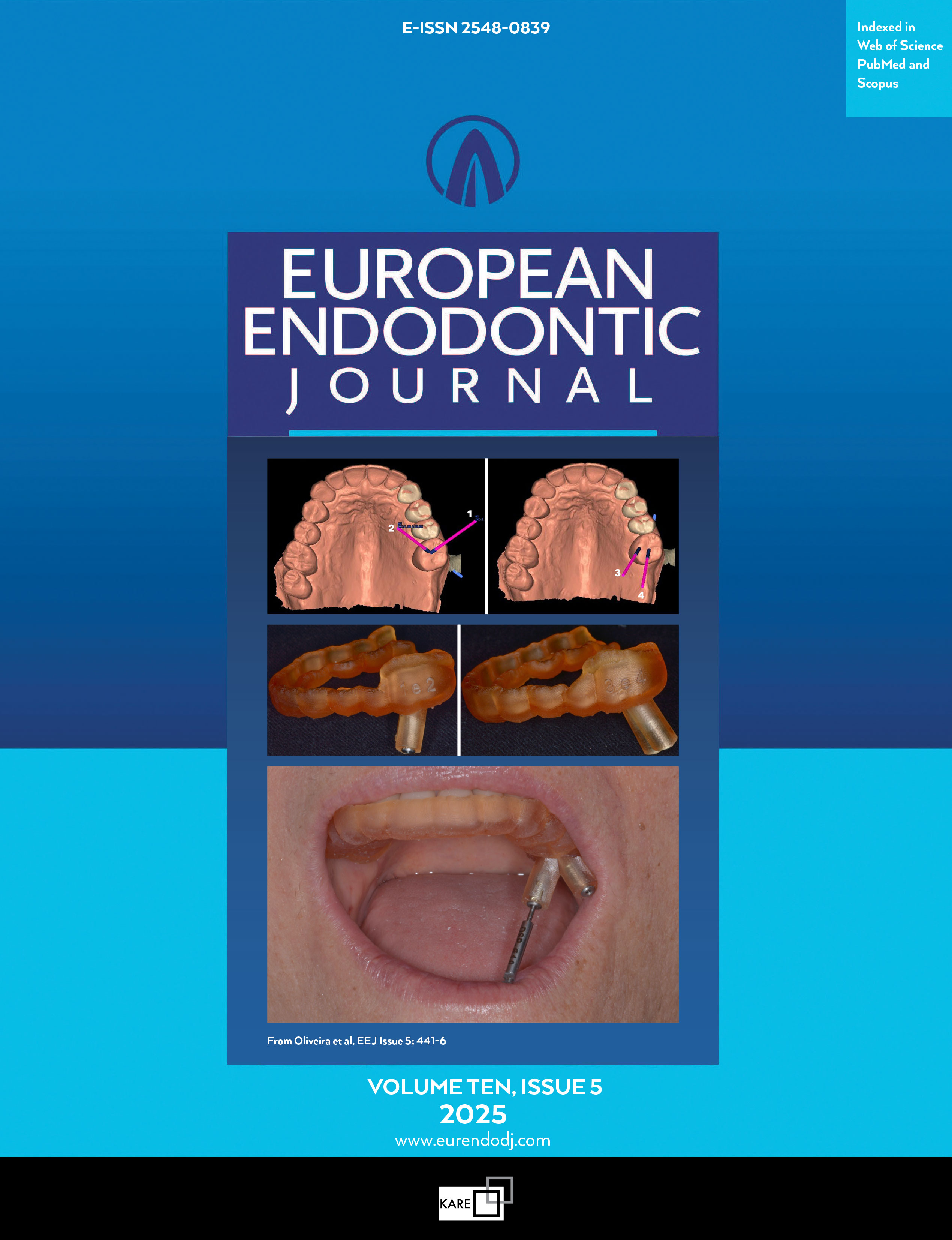Metrics
2024 IMPACT FACTOR
5 year Impact Factor
Eigenfactor Score
2024 CiteScore
Journal Citation Reports
(Clarivate 2025, JIF Rank)
Efficacy of Platelet Rich Plasma and Platelet Rich Fibrin for Direct Pulp Capping in Adult Patients with Carious Pulp Exposure- A Randomised Controlled Trial
Shekar Shobana1, Mahendran Kavitha2, Narasimhan Srinivasan31Department of Conservative Dentistry and Endodontics, Tagore Dental College and Hospital, The Tamilnadu Dr MGR Medical University, Tamil Nadu, India2Department of Conservative Dentistry and Endodontics, Tamilnadu Government Dental College and Hospital, The Tamilnadu Dr MGR Medical University, Tamil Nadu, India
3Hamad Dental Center, Specialist Endodontics, Hamad Medical Corporation, Doha, Qatar
Objective: This study evaluated the effectiveness of Platelet Rich Plasma (PRP), Platelet Rich Fibrin (PRF) and Mineral Trioxide Aggregate (MTA) as direct pulp capping materials in patients with carious pulp exposure using cone beam computed tomography.
Methods: This parallel, triple blinded, randomised trial was done on 30 permanent posterior teeth chosen as candidates for direct pulp capping based on stringent inclusion and exclusion criteria. The samples were allocated based on sequentially numbered opaque sealed envelope method into three groups: MTA, PRP and PRF for direct pulp capping. The treated teeth were restored with Glass Ionomer cement liner and light-cured resin composite. Patients were followed up for a period of 12 months. Statistical analyses were performed with statistical software SPSS version 25. Data were analysed for normality using Shapiro Wilks test. Dentine bridge volume analysis across the groups were done using Kruskal Wallis test with the significance level at P=0.05. As the test revealed a significant difference, post hoc analysis was done with Dunn test.
Results: CBCT analysis revealed that the volume of dentine bridge formed by PRP and PRF was significantly higher than the volume of dentine bridge formed by MTA (P<0.001; CI: 90%). There was no significant difference in the efficacy between the three direct pulp capping agents based on clinical assessment. A total of 27 teeth (90%) showed positive response to pulp sensibility testing and evidence of dentine bridge formation in radiograph at 12 months. No adverse events were encountered.
Conclusion: Platelet concentrates could be the future of vital pulp therapy for adult permanent teeth with reversible pulpitis. (EEJ-2021-05-078)
Manuscript Language: English
(1451 downloaded)


